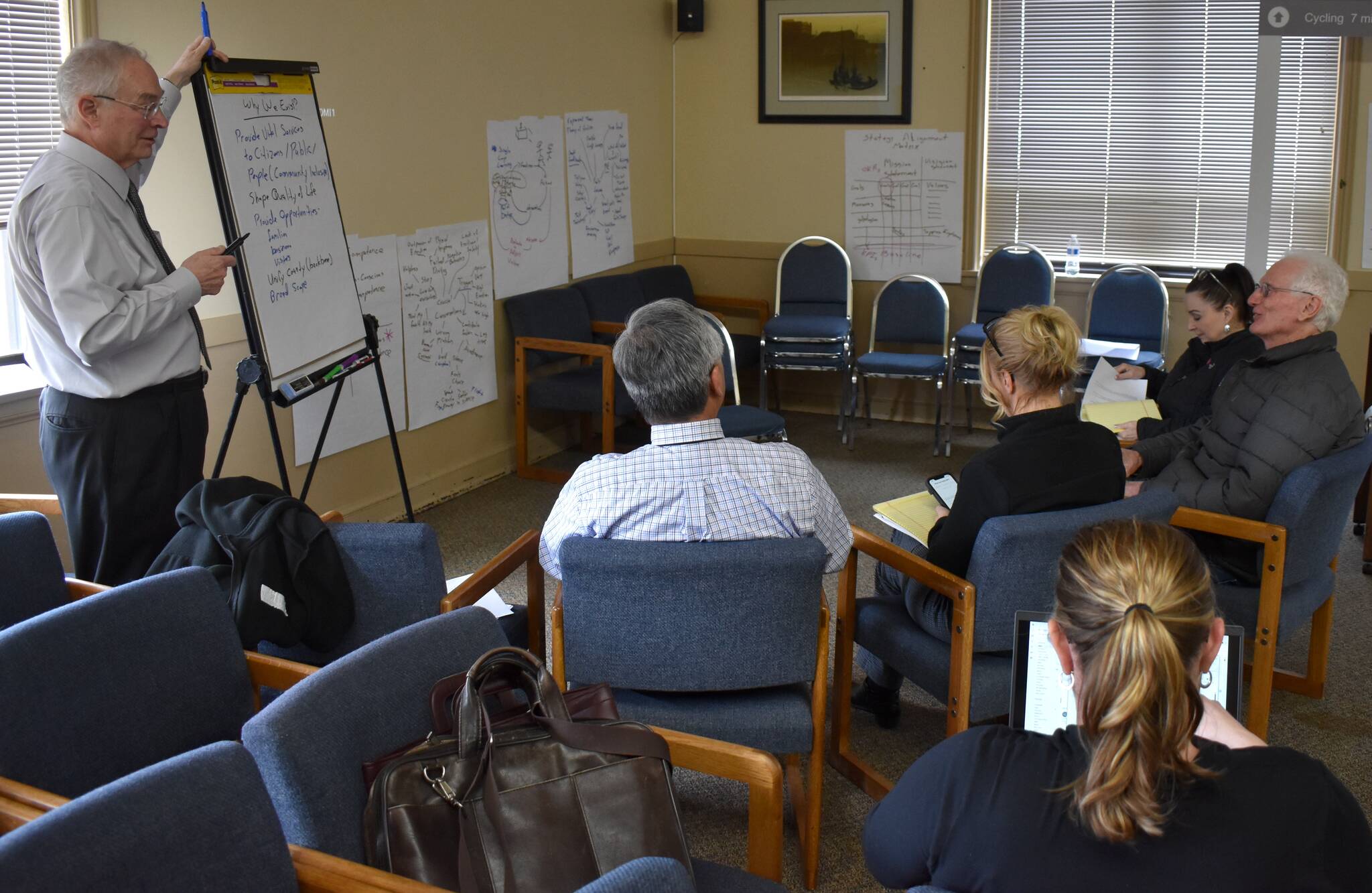
Commissioners Define Vision and Mission

Grays Harbor County Commissioners Embark on Strategic Planning Initiative
Grays Harbor County has undertaken a comprehensive strategic planning initiative aimed at fostering better communication, problem-solving, and a unified vision for the future. Spearheaded by consultant Thomas O’Connor, the effort involved a series of retreats spanning from March 31st to July 9th. These sessions brought together the Board of County Commissioners – Georgia Miller, Rick Hole, and Vickie Raines – along with County Administrator Sam Kim, Clerk of the Board Wendy Chatham, and other key county officials.
Read more: Westgate Rehab West Palm Beach Comprehensive Care
The initiative’s core focus was on equipping the newly formed Board of Commissioners with the tools necessary to effectively collaborate, navigate the complexities of their roles, and address the county’s most pressing issues.
Problem Solving at the Forefront
According to County Administrator Sam Kim, the strategic planning sessions were fundamentally about problem-solving. Kim, drawing on his engineering background, emphasized the importance of proactively addressing challenges and finding solutions that benefit the community. The aim was to move beyond unproductive disagreements and focus on tangible results for the residents of Grays Harbor County.
Building a Foundation for Collaboration
The strategic planning process involved a series of offsite meetings held in various locations, including Hoquiam, Elma, and Montesano. Participants engaged in a variety of exercises and activities designed to foster communication, build understanding, and develop conflict resolution skills. These sessions were crucial for establishing a solid foundation for effective collaboration among the commissioners and other elected officials.
Key participants included Chief Deputy Auditor Ricardo Espinoza, Chief Deputy Treasurer Shawn Hill, County Clerk Kym Foster, Budget Manager Andree Harland, HR Manager and acting Chief Financial Officer Rob Bouffard, Public Health Director Mike McNickle, and Director of Utilities, Facilities and Community Development Mark Cox, all of whom attended a pivotal session on July 9th.
Unity and Progress
Kim expressed optimism about the progress made during these sessions, highlighting the Commissioners’ commitment to working together, even when disagreements arise. He emphasized the importance of healthy debate and the ability to support decisions, even when one has voted against them. This unity, he believes, is essential for serving the best interests of the county residents.
Commissioner Georgia Miller echoed Kim’s sentiments, noting that the strategic planning process has pushed her to deepen her understanding of the county’s functions and obligations to the community. She affirmed the Board’s commitment to responsible stewardship of taxpayer dollars and making decisions that will benefit Grays Harbor County for generations to come.
Integrating Health into the County’s Vision
Grays Harbor County Public Health Director Mike McNickle expressed his enthusiasm for the Board of County Commissioners’ decision to prioritize health within the county’s vision. He emphasized the importance of considering health implications in all discussions, from transportation and housing to other critical areas. McNickle believes this holistic approach will lead to more effective and sustainable solutions for the community.
Overcoming Past Obstacles
Commissioner Raines initially proposed similar workshops approximately 11 years prior; however, a confluence of factors prevented their realization. Kim explained that a lack of alignment, agreement, and a shared vision had previously hindered progress. The current strategic planning initiative represents a significant step forward in establishing a “North Star” for the county.
Forming, Storming, Norming, and Performing
One of the key concepts introduced during the strategic planning sessions was the “Forming, Storming, Norming, and Performing” model of team development. This framework, developed by Bruce W. Tuckman, outlines the stages that teams typically go through as they evolve and become more effective.
Kim acknowledged that building a cohesive team in Grays Harbor County required more fundamental work than initially anticipated. The process involved learning how to communicate effectively, treat each other with respect, and navigate disagreements constructively. He emphasized the importance of “arguing well” and engaging in healthy debates without personalizing disagreements.
Understanding Personalities with DiSC Assessments
To further enhance understanding and communication among participants, the strategic planning sessions incorporated Dominance, Influence, Steadiness, and Conscientiousness (DiSC) assessments. These assessments, similar to the Myers-Briggs Type Indicator, are designed to help individuals understand their own personality types and how they interact with others.
Kim explained that DiSC assessments can be valuable tools for improving teamwork, communication, and productivity in the workplace. By understanding different personality types, individuals can better adapt their communication styles and build stronger relationships with colleagues.
Embracing Conflict for Better Decisions
Kim emphasized that the strategic planning initiative has fostered a willingness among the County Commissioners to embrace conflict as a means of generating better ideas and making more informed decisions. He acknowledged that this approach represents a significant departure from past practices in Grays Harbor County, where conflict was often avoided.
Now, according to Kim, healthy debates are becoming the norm, leading to more productive outcomes. He believes that dissent is welcome because it ultimately leads to better decisions for the county.
Goals for the Future
Kim outlined several key goals for Grays Harbor County, including increasing economic development, creating a holistic healthy ecosystem, fostering education and workforce development, and strengthening infrastructure. He emphasized the county government’s role in paving the way for success and eliminating barriers to progress.
Mission, Vision, and Values
The strategic planning initiative culminated in the development of official mission and vision statements, as well as a set of core values for Grays Harbor County:
-
Mission: Effectively provide foundational services to enhance quality of life, encourage economic growth, and unify our community as one Grays Harbor.
-
Vision: Be the foundation of a thriving community as seen in the pillars of:
- Financial stewardship
- Housing
- Criminal justice, public safety and public health
- Economic development
- Service orientation
-
Values:
- Transparency: Open government, inclusive, accessible, responsive
- Stewardship: Balanced budget, efficient, asset management, procurement
- Leadership: At all levels, cohesive, positive culture, planning for succession
- Integrity: Honesty, courage, clear and concise practices, accountability
- Service oriented: Knowing your customer, customer first (“what can we do for you” focus), responsive and timely, help vs. hinder thinking, speak their language






